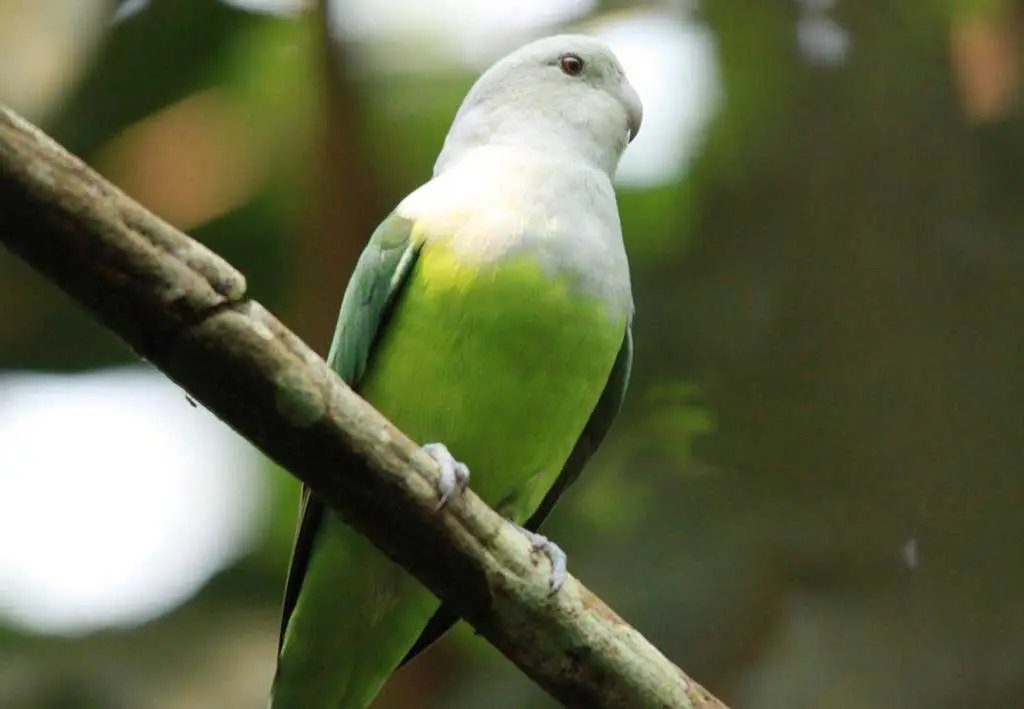
The Madagascar lovebird, also known as the grey headed lovebird or Agapornis canus (also agapornis cana), is a unique and captivating bird species that has captured the hearts of bird enthusiasts worldwide. This mainly green parrot stands out among the lovebird species due to its striking appearance, characterized by a pale grey head, and fascinating behaviors. In this comprehensive guide, we will delve into the world of the grey headed lovebird, exploring their distinctive physical traits, natural habitat, diet, behavior, and challenges faced in captivity.
Distinctive Physical Traits
The Madagascar lovebird sports a variety of vibrant colors that make it a truly stunning sight. Let’s take a closer look at some of their most distinctive physical traits.
Grey Headed Males
The adult male grey headed lovebird is the only lovebird species with a pale grey head, which extends over the entire head, upper chest, and upper body. This characteristic sets the male’s grey head apart from other similarly colored lovebird species, such as the peach faced lovebirds.
Green Body Feathers
The body feathers of the grey headed lovebird are mainly green, with the adult female exhibiting a slightly paler green chest compared to the adult male. The green coloration is most vibrant on the bird’s upper body, gradually transitioning to a darker green on their back.
Bright Green Rump and Dark Green Back
One of the most striking features of the grey headed lovebird is its bright green rump, which contrasts sharply with the dark green back. This vivid coloration makes these lovebirds easy to spot in their natural habitat.
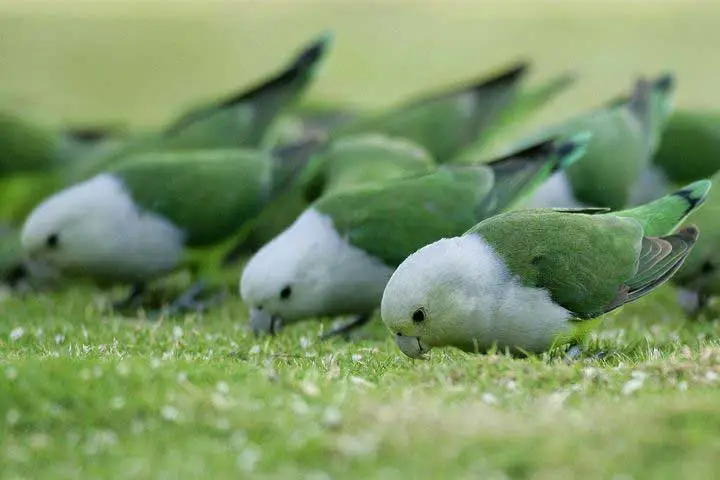
Natural Habitat and Distribution
Madagascar lovebirds are endemic to Madagascar. In this african island, they can be found in lightly wooded habitats, forest edges, and neighbor islands. Their natural range is restricted to this region, and they are not commonly seen in other parts of the world.
These lovebirds primarily inhabit the edges of forests and areas with sparse trees. They thrive in a variety of lightly wooded habitats, where they have access to grass seeds, fruits, and fresh water. Madagascar lovebirds can also be found in open grasslands, where they forage for food and nest materials.
In addition to their presence in Madagascar, the species occurs on some of the neighboring islands, such as Comoros and Mayotte. However, their populations on these islands are smaller and less dense compared to their natural range in Madagascar.
Behavior and Social Life
Madagascar lovebirds are highly social creatures known for their lively and energetic behavior. Let’s explore their flock dynamics, social interactions, and vocalizations.
These small species of lovebirds often form large flocks, which can consist of several hundred individuals. They are very active during the day, engaging in activities such as foraging, preening, and socializing with other members of the flock. Their strong bonds with each other make them a fascinating species to observe in the wild.
Vocalizations and Communication
Madagascar lovebirds communicate through a range of high-pitched notes, quiet chattering, and other vocalizations. Their calls serve various purposes, such as maintaining contact with flock members, signaling danger, or expressing emotions. Although their vocalizations may not be as melodic as some other bird species, they are an essential aspect of their social life.
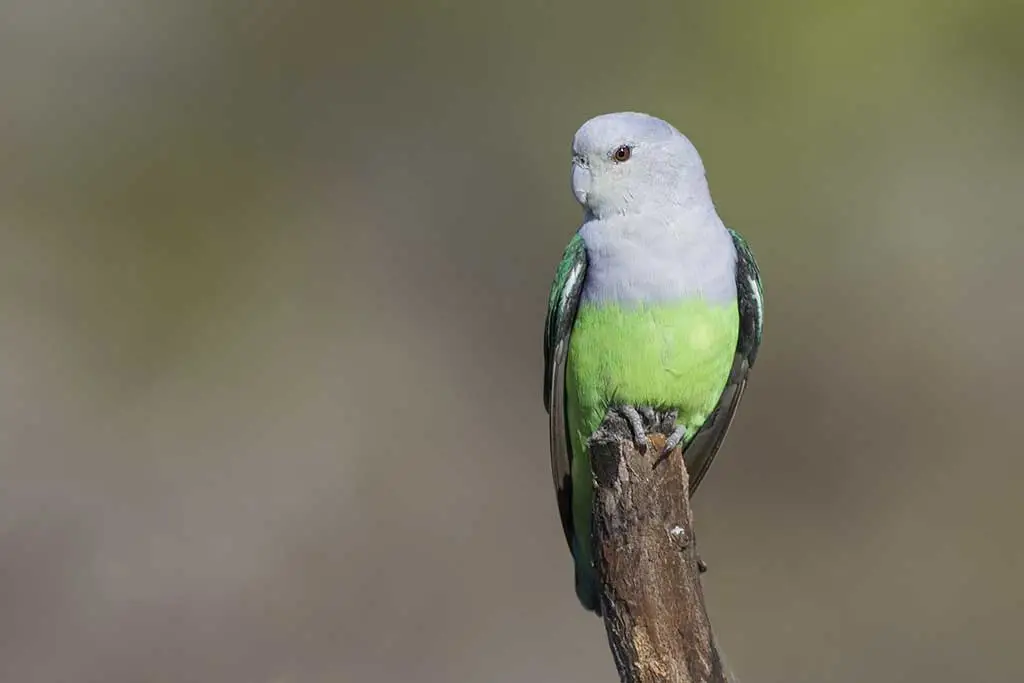
Diet and Feeding Habits of a Madagascar lovebird
The diet of the grey headed lovebird primarily consists of grass seeds, canary seed, and other small seeds. They also consume fresh fruits and vegetables, which provide essential nutrients for their health and well-being.
Grass seeds are a staple in the diet of the grey headed lovebird, providing them with essential nutrients and energy. They forage for seeds on the ground, using their strong beaks to crack open the seed casings. Canary seed is another favorite food source, which can be found in their natural habitat or provided by birdkeepers in captivity.
In addition to seeds, Madagascar lovebirds eat a variety of fruits and vegetables, such as apples, oranges, carrots, and leafy greens. These foods offer a range of vitamins and minerals, helping to maintain the bird’s overall health.
Breeding and Reproduction
The breeding season for grey headed lovebirds typically occurs during the cold weather months, although it can vary depending on the availability of food and suitable nesting sites. During this time, pairs form strong bonds and engage in courtship displays. It is essential to provide a suitable nest box and appropriate nesting material to encourage successful breeding and ensure the lovebirds have a comfortable environment to raise their young.
Grey headed lovebirds, like most lovebird species, are known for their monogamous pair bonding. Once they have formed a strong bond with their partner, they remain loyal to each other for life. This is particularly important in the wild, where competition for nest boxes and resources can be fierce, as other birds within their African continent habitat, such as the African gray parrot, may also be vying for the same nesting sites.
Breeding Season and Nesting Behavior
During the breeding season, Madagascar lovebirds construct their nests using a variety of materials, including grasses, twigs, and chewed leaf fragments. The nest is usually built in a tree cavity or other sheltered location, providing protection for the eggs and young chicks.
Egg Clutches and Parental Care
The female grey headed lovebird lays an egg clutch consisting of 3 to 6 eggs, which are incubated for approximately 21 to 23 days. Both the adult male and adult female participate in incubation and feeding the chicks once they hatch. The young birds fledge after about 40 days, after which they begin to explore their surroundings and develop their flying skills.
Keeping Madagascar Lovebirds as Pets
Madagascar lovebirds can make fascinating and rewarding pets for experienced birdkeepers who understand their specific needs and behaviors. Let’s discuss some important factors to consider before deciding if this species is the right pet for you.
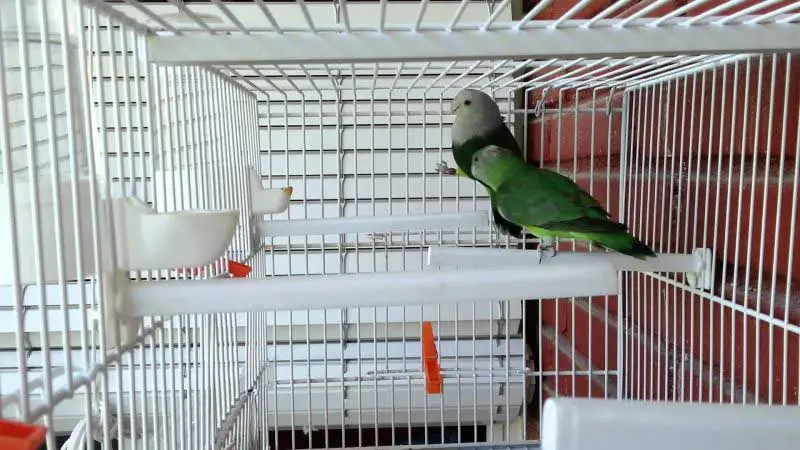
Compatibility with Other Lovebird Species
While Madagascar lovebirds can be kept with other lovebird species, such as peach-faced lovebirds, it is essential to monitor their interactions closely. They may not always get along, and mixing species can sometimes lead to aggression or stress. It is generally recommended to keep grey headed lovebirds with their own kind to ensure a harmonious environment.
Hand-fed Birds and Taming
Hand-fed birds remain more comfortable around humans and are easier to tame than those raised entirely by their parents. Even hand-fed birds, however, can be easily frightened and may take time to develop trust with their human caretakers. Patience, persistence, and positive reinforcement are crucial when working with these sensitive birds.
Housing and Environmental Requirements
Proper housing is essential for the health and happiness of Madagascar lovebirds. They need a spacious cage with plenty of room to stretch their wings, climb, and play. Ensure the cage is equipped with perches, toys, and hiding spots to keep the birds entertained and engaged.
Grey headed lovebirds also require a fresh supply of clean water for drinking and bathing. Providing fresh fruits, vegetables, and a varied diet will help ensure they receive the necessary nutrients for optimal health.
These birds have a poor tolerance for cold weather, making it essential to provide a warm and stable environment. Cold weather breeding attempts are generally unsuccessful, as the chicks may not survive low temperatures. Always ensure your lovebirds are housed in a suitable environment, free from drafts and sudden temperature fluctuations.
Conservation Status
The grey headed lovebird is currently listed as a species of “Least Concern” on the IUCN Red List. Although their populations are stable in their natural range, habitat loss and trapping for the pet trade pose potential threats to their future survival. Conservation efforts and responsible birdkeeping practices can help ensure the continued survival of this unique and captivating species.
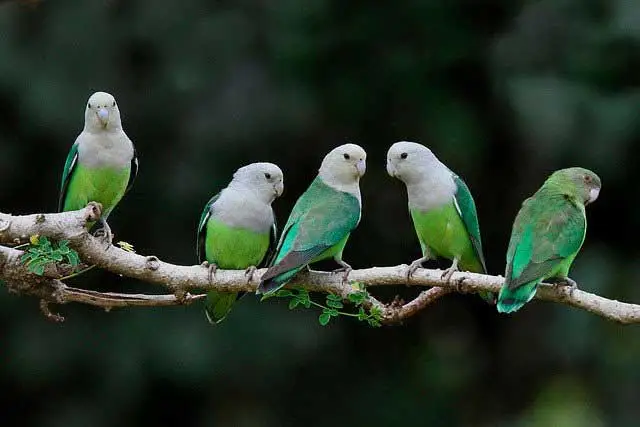
Conclusion
The grey headed lovebird, also known as the grey-headed lovebird, is a small, mainly green parrot native to Madagascar and neighbor islands. With its distinctive grey head, lively behavior, and fascinating social life, this species has captivated bird enthusiasts worldwide. By understanding their needs, behaviors, and conservation status, we can appreciate and protect these remarkable birds for generations to come.
